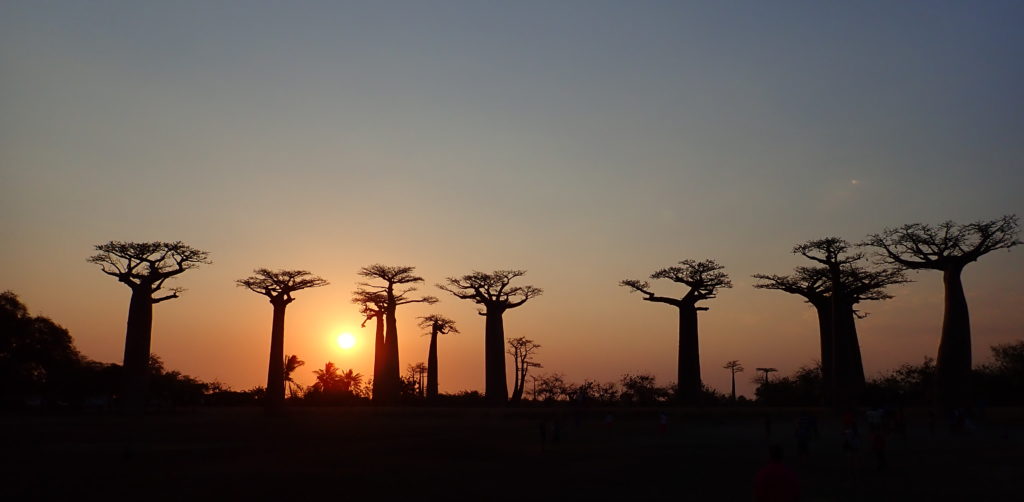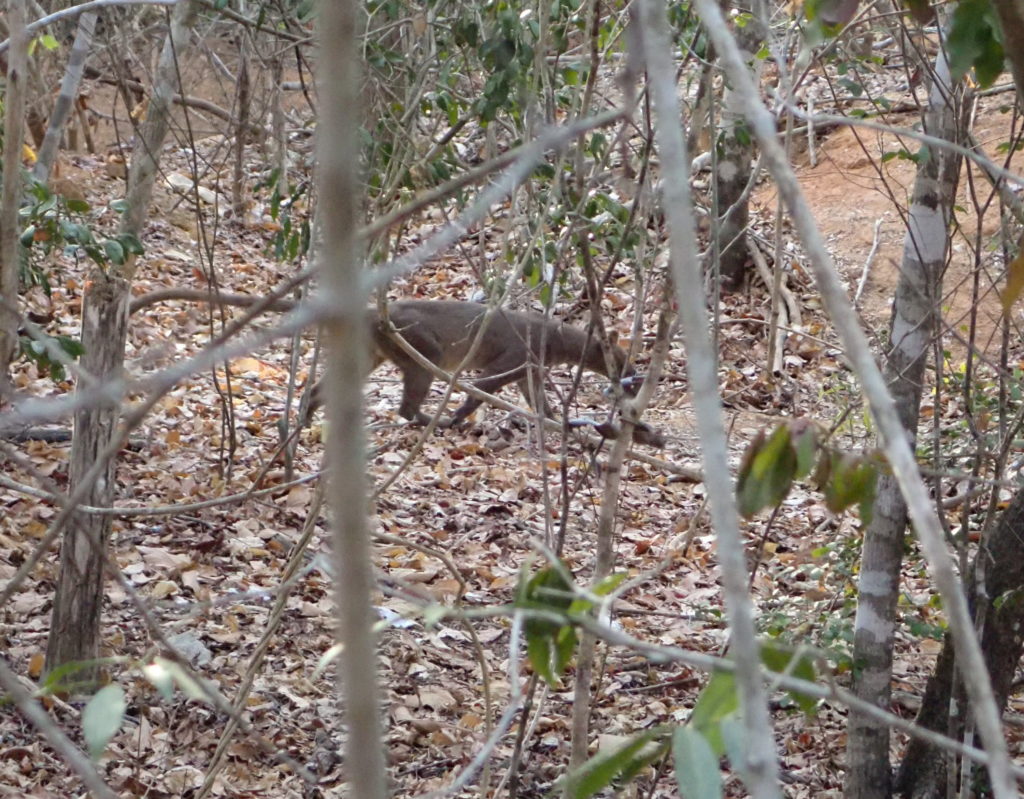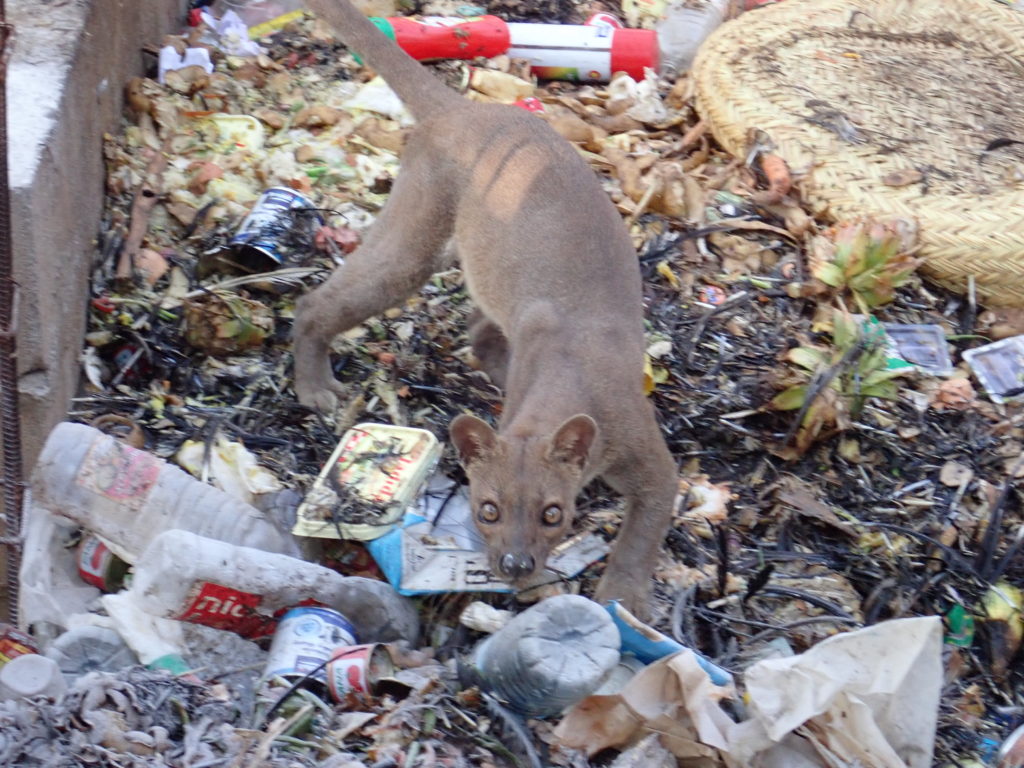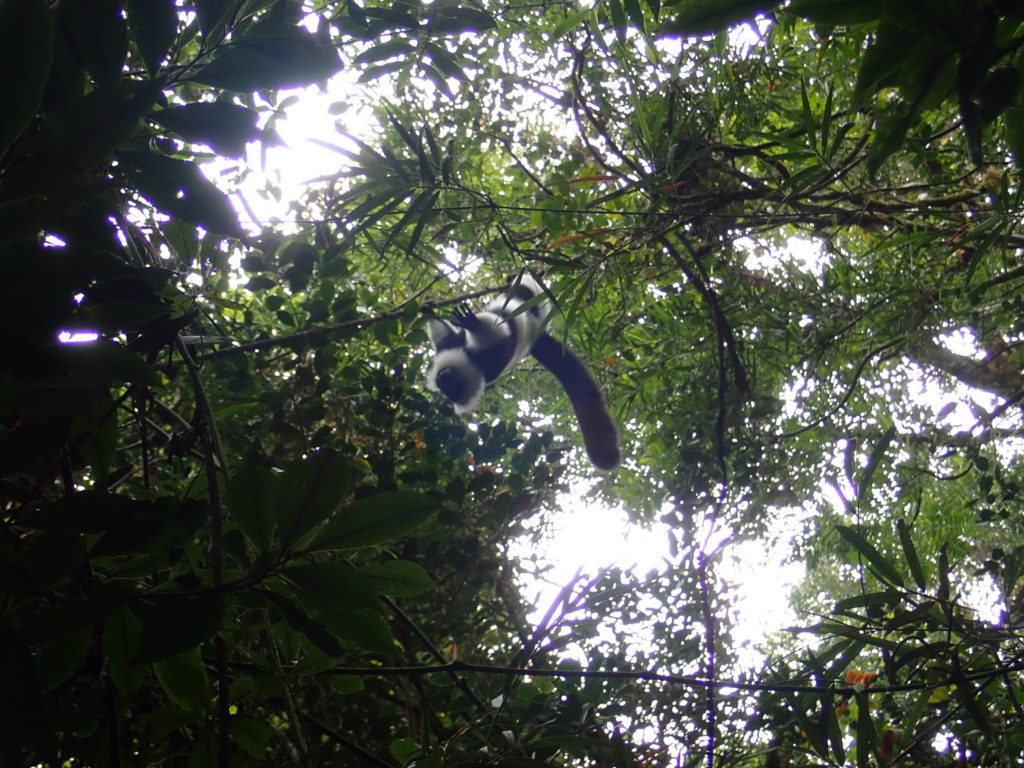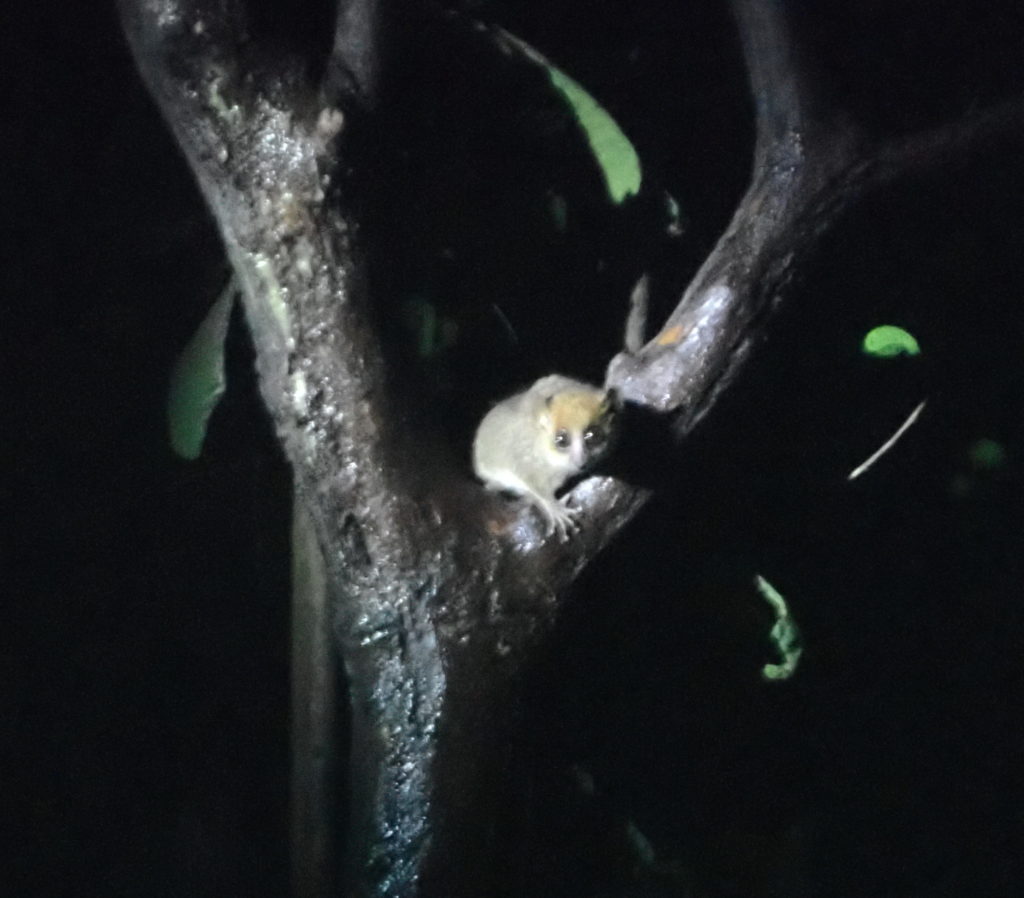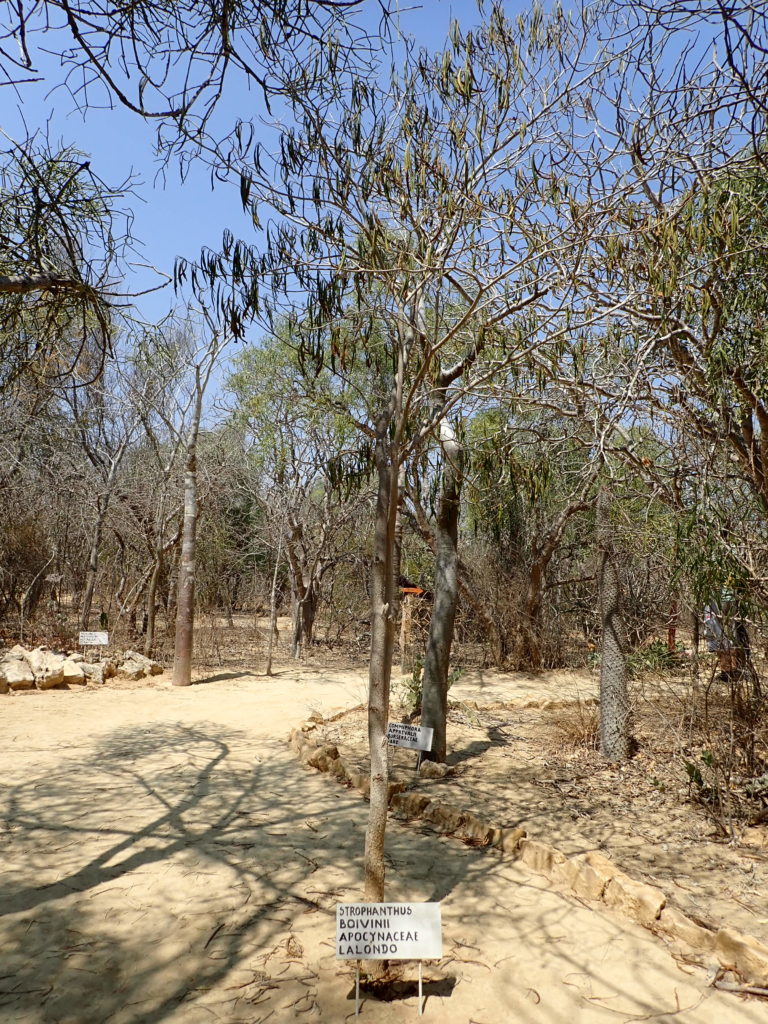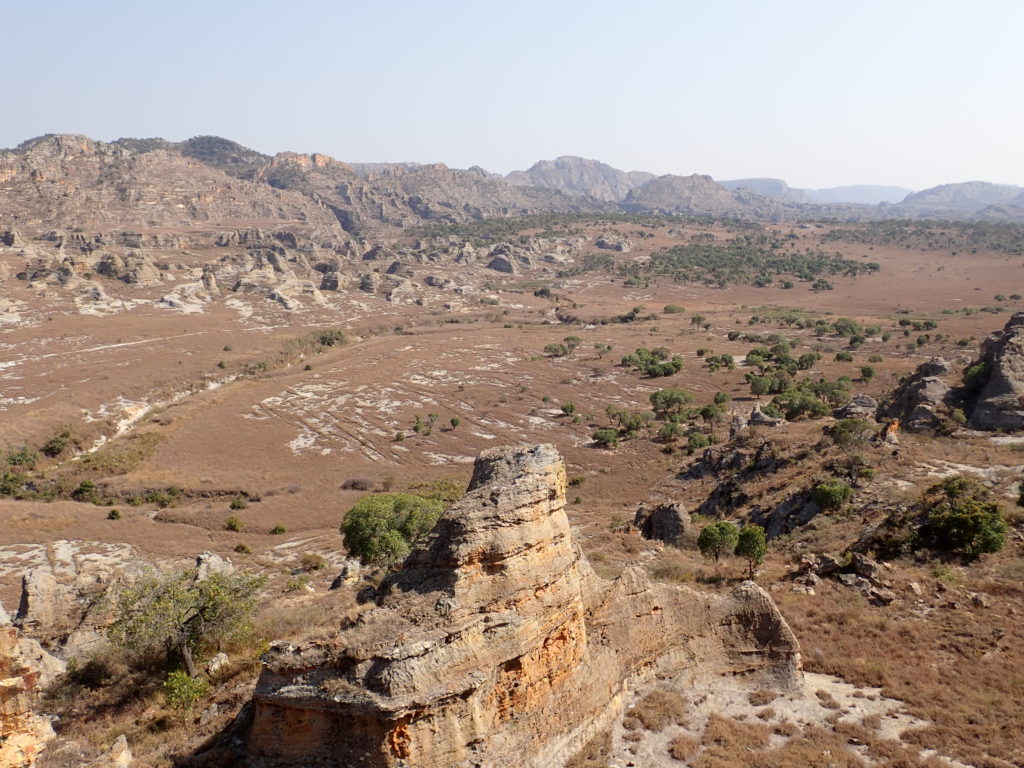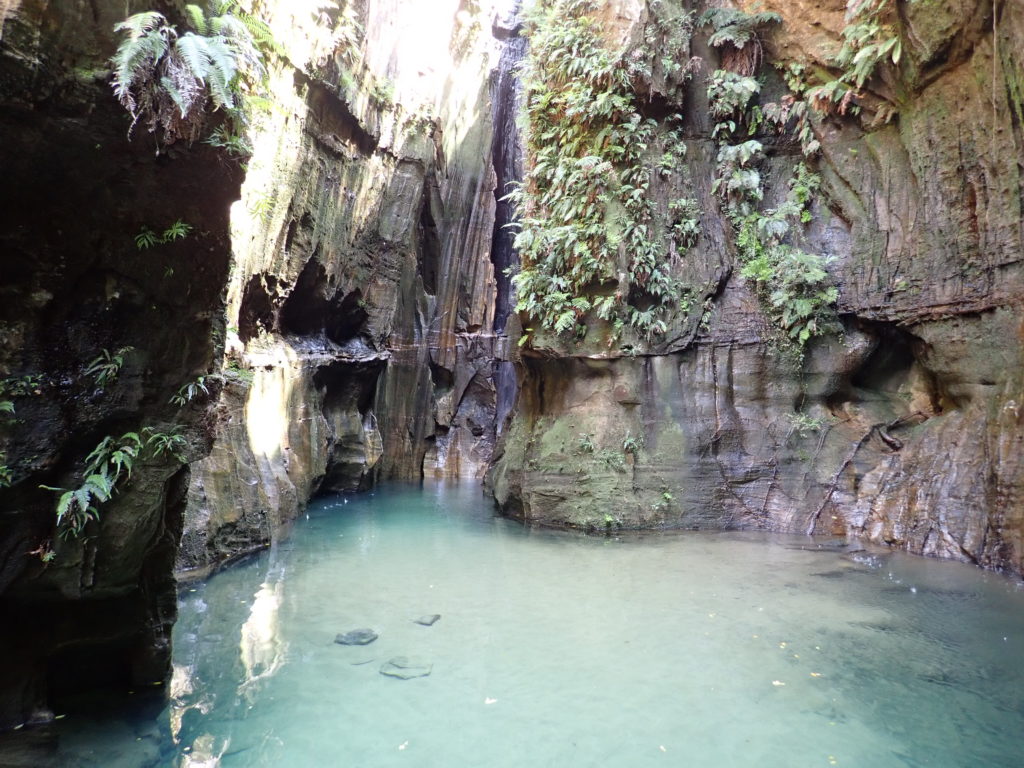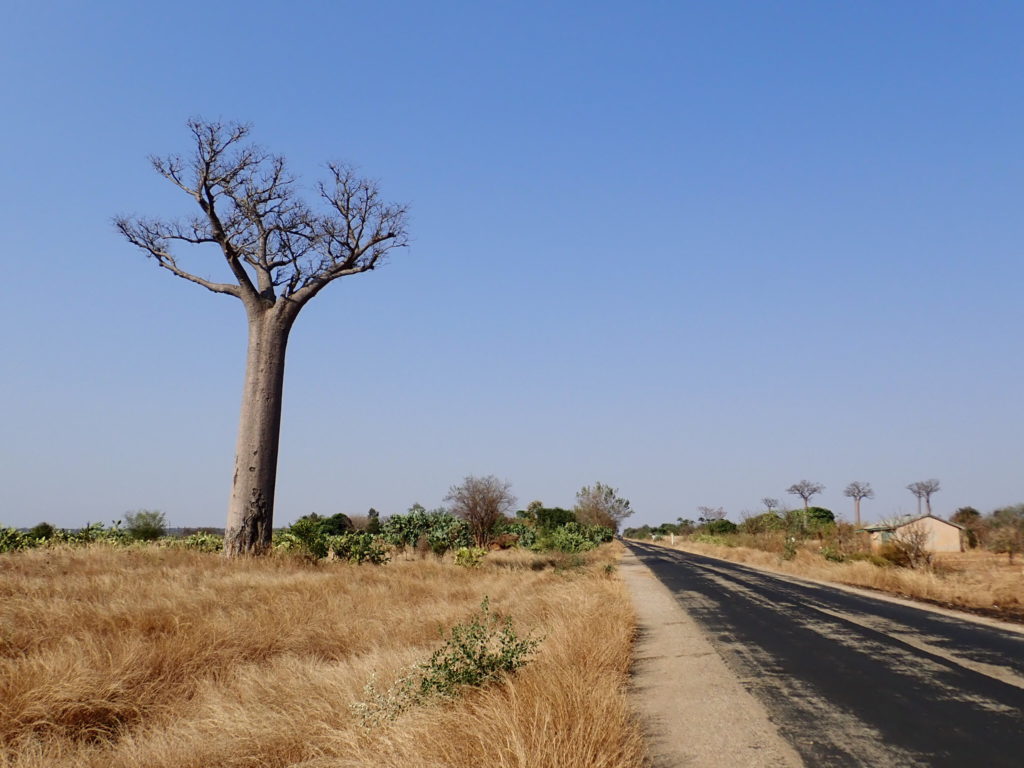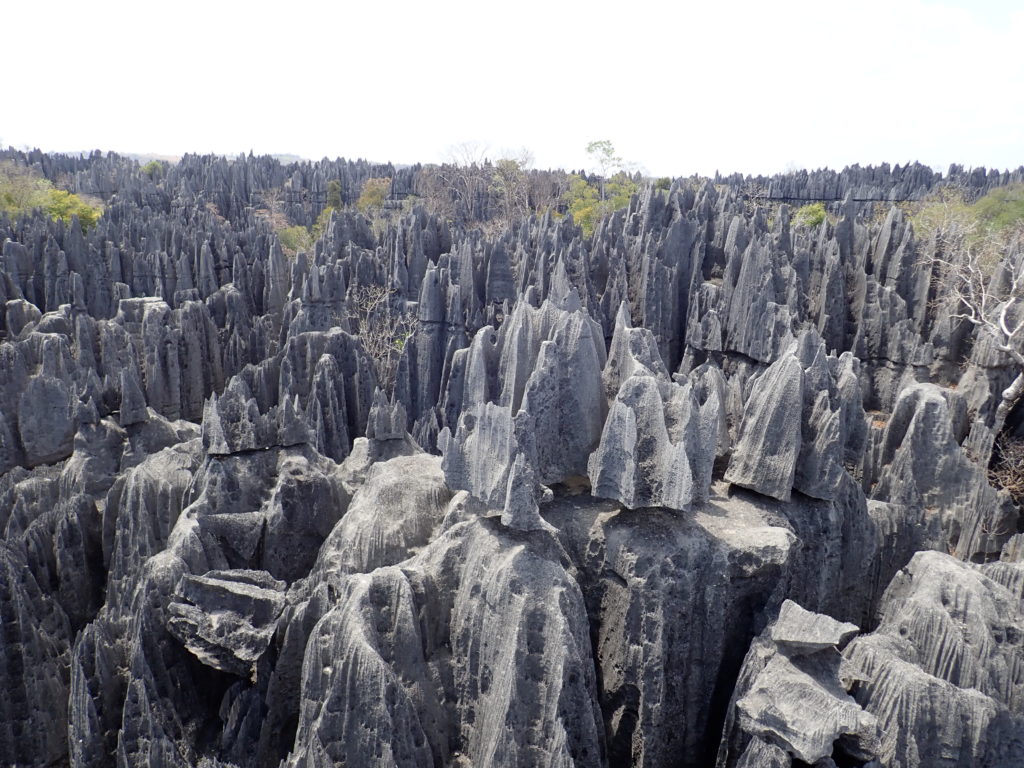
Madagascar has a wide array of ecosystems as a result of ocean currents, winds and the mountain range that splits the country from north to south. Rainfall is a the determining factor in forming these ecosystems with heavy rains in the north and east and relatively little rain west and south. The various national parks that we have visited all had very different climates themselves. Isalo is a prime example of Tapia woodlands and palm savannah, partly man-made due to heavy slash-and-burn clearing for farming (locally called tavy). This feels like a waste of natural resources to the Western traveller but is central to the Malagasy culture and way of living. With large parts of Europe cleared ages ago for agriculture and housing, it is hard to criticize what is happening here. Nevertheless, the ecosystems provide for a large amount of income from tourists and as such there should be an economic rationale to preserve them.
Ranomafana is a good example of montane rainforest at altitudes between 800-1300 m which makes it cooler than lowland rainforest, with lower canopy and denser undergrowth that holds many ferns, moss and lichen. This was particularly visible in the primary forest. Kirindy in turn is mainly dry deciduous forest, which must have covered large parts of Western Madagascar many years ago. It is less diverse in plant growth than the forests in the east but has a higher level of endemism. In the dry season, canopy leaves are shed and wildlife moves to the ground. Snakes, tortoises and other amphibians bury themselves in the humus on the floor with larger wildlife preying on them. When rain returns, the forests will return to a sea of green. We would have liked to do Andringitra national park in the south-west as it one of the few examples of cloudforest (rainforest above 1300 m), called this way because it is sometimes cloaked in mist. However this park was closed due to hostilities of local tribes towards tourists and it is unclear how long this will persist.
There is one particular ecosystem in Madagascar that is a must-visit for travellers, the limestone karst formations that are locally known as tsingy. They are found within the dry deciduous forests and hold a striking variety of plants and wildlife. The limestone formations are in essence ancient coral reefs that have been pushed upward due to geological activity. Once above water, they have been eroded by the heavy monsoon, creating a vast plateau of knife-edge pinnacles. We were told the Malagasy word tsingy means ‘to walk on one’s toes’ which is the best way to traverse the plateau. Another translation is ‘where one cannot walk barefoot’.

We visited the area of the most famous tsingy, the UNESCO heritage site Tsingy de Bemaraha. It can only be reached by road from Morondava and takes eight hours over unpaved tracks for which a good 4×4 is necessary. The track is sandy, rocky and adventurous and twice the car had to be loaded on a makeshift ferry (two large canoes with a platform) to cross a river. The trip itself is already very rewarding for those who like to go off the beaten track. The track will also take you early past the Allee des baobabs seventeen kilometres from Morondava, even before you reach Kirindy. As this is best viewed at sunset, most travellers stop here on the way back.
Roughly halfway the drive is a city called Belo sur Tsiribihina. Most drivers will stop here for lunch. There is a restaurant of remarkable quality called the Mad Zebu that is not to be missed. Intriguing how this restaurant is probably the only decent place for western travellers to get a meal but at the same time outperforms almost every other restaurant we’ve been to during our trip in much more densely populated areas (Chez Jenny in Antsirabe deserves to be be mentioned here as well).
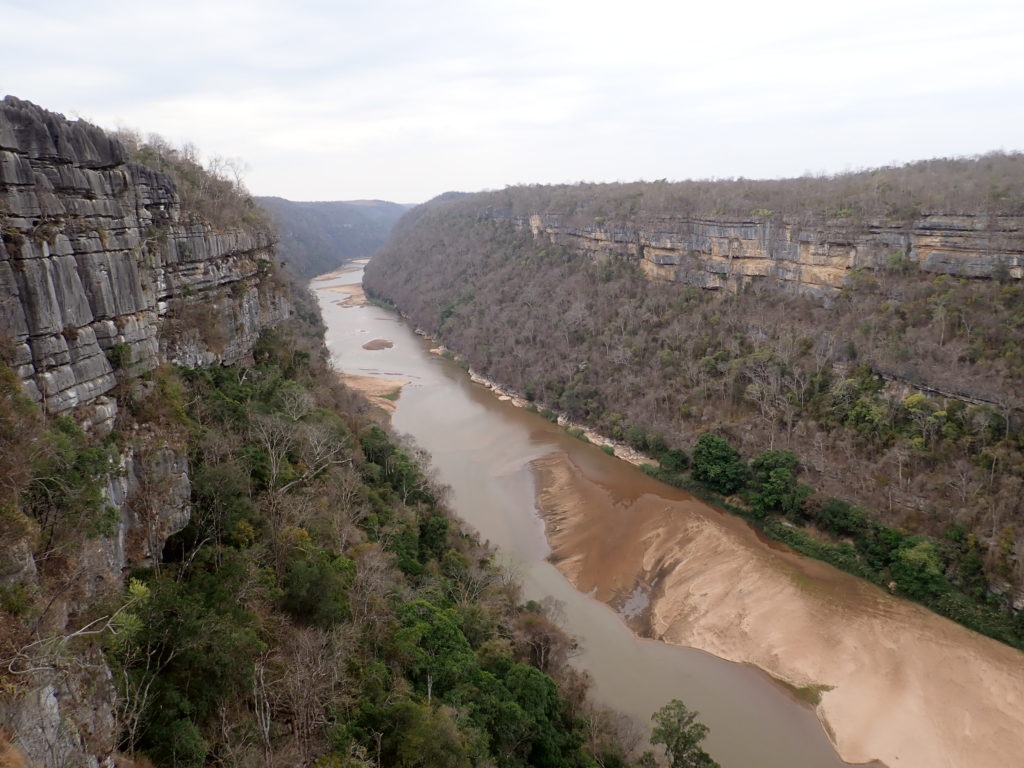
Near the Tsingy de Bemaraha park lies the city of Bekopaka from which to plan the visit to the park. For the first day we booked a local pirogue (canoe) trip over the Manambolo river that took us past caves in the cliff walls along the river. We stopped at a number of caves to see stalactite and stalagmite formations and then the boatsman took us to a remote beach from where we made a three-hour hike to a local tsingy. This was a relatively tough climb and we had only expected this tour to be by boat. However, the tsingy plateau was beautiful and more rewarding than the popular Small Tsingy hike close to Bekopaka that we had booked for the afternoon. On the way to both tsingys we saw some lemurs and amphibians but nothing too special.
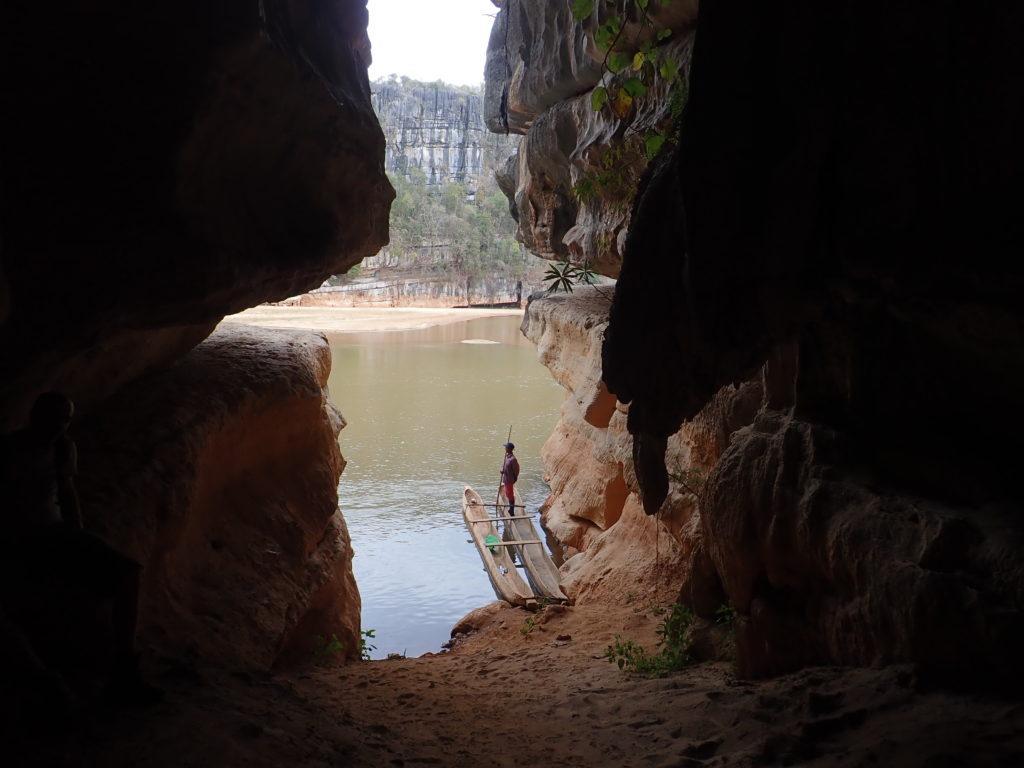
The main hike to Grand Tsingy we had saved for the second day. This is a tough hike which involves a lot of climbing, some with the aid of ropes and climbing equipment. It takes you through caves, over ladders and small wooden hang-bridges to two viewing points over the Grand Tsingy that show the limestone formations in all their glory. There are supposedly eleven different species of lemur but we did not see many which was fine because that is why we visited this park. We ad late lunch in a place called the ‘cathedral’, basically a cave system with partly open roof, allowing in natural light and plant growth to develop. There were some red-tailed mongoose begging for our food that had no fear of humans anymore and we had to shoo them away.
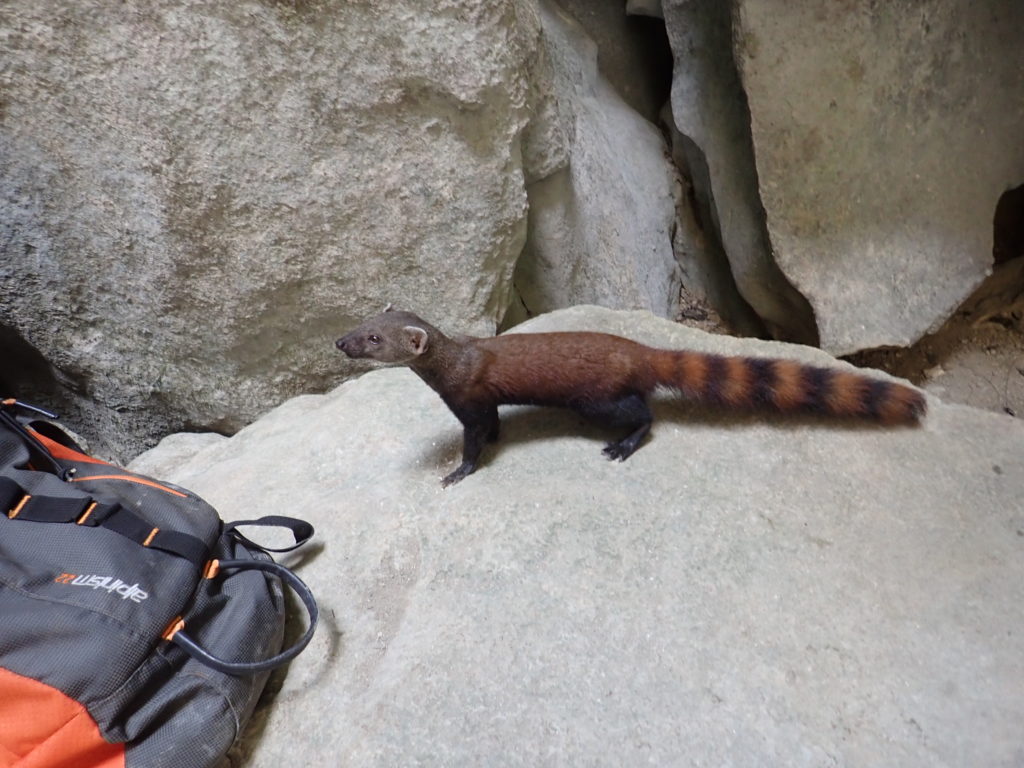
The tracks through the tsingy are narrow and on a busy day progression can be slow as the slowest group dictates the tempo. It will be interesting to see how this park is going to deal with the inevitable flow of more visitors in the coming years as Madagascar further develops. The trip itself is very entertaining and should be on the itinerary of every visitor to Madagascar but due to the long day drive to and from Bekopaka, it takes a decent chunk out of any holiday. It is possible to get charter flights to Bekopaka from Antananarivo but this is pricey and you’ll miss the great adventure on the road.
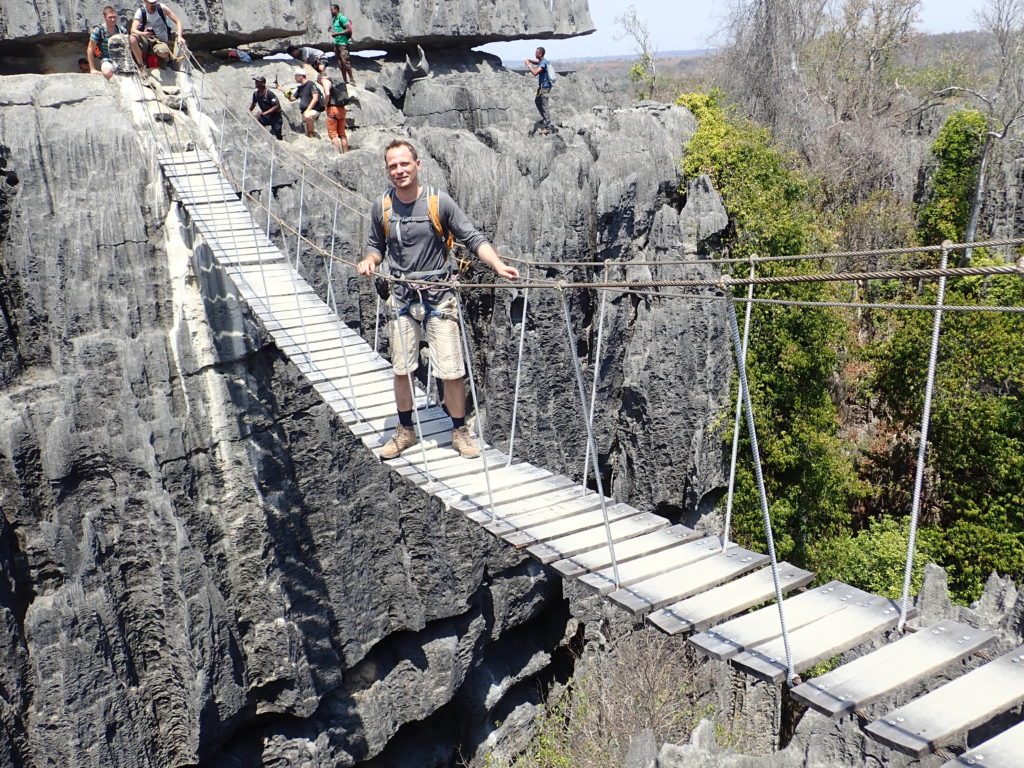
The next day we made the long drive back and stopped at the Allee des baobabs to see the sunset. That night we finally did our first clubbing, in a very decent place in Morondava called Insomnia. A well-deserved break after two weeks of hiking through all the natural richness that Madagascar has to offer.
